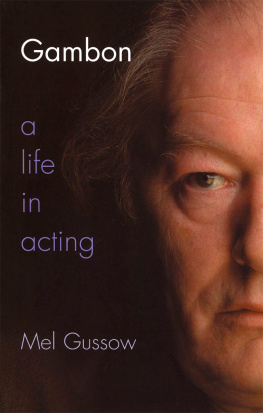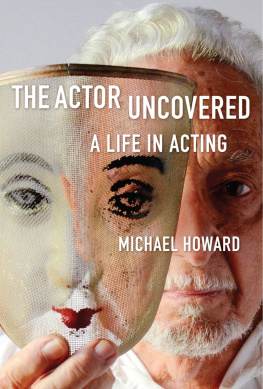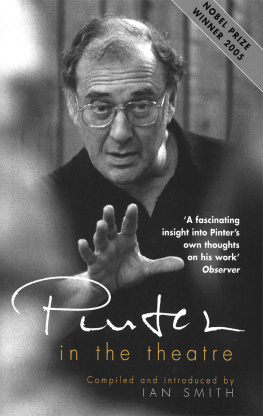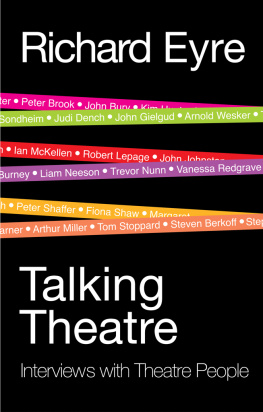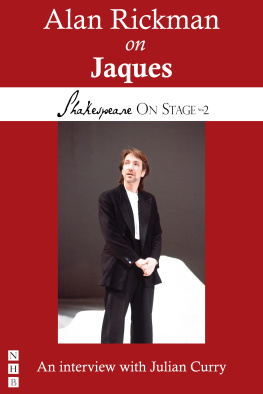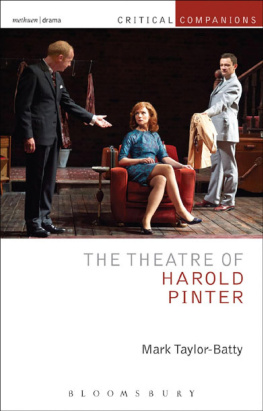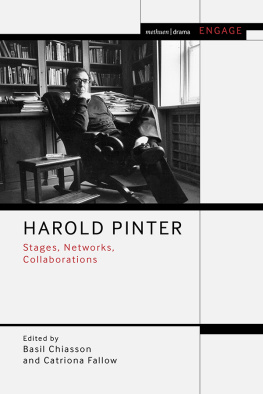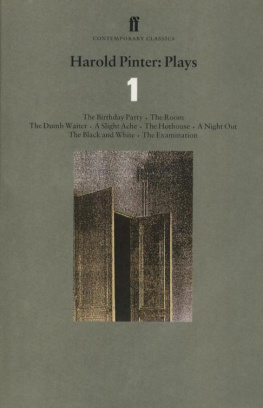Mel Gussow
Gambon:
a Life in Acting

NICK HERN BOOKS
London
www.nickhernbooks.co.uk
for Ann
Introduction
During his years as head of Britains National Theatre, Peter Hall always wanted to present a revival of Brechts The Life of Galileo. Finally, when he had obtained the rights to the play from the Brecht estate and had the financing for the production, he turned to the question of casting. Colin Blakely and Albert Finney were high on the list of logical candidates for the monumental role, but Hall to the astonishment of his associates reached down into the ranks of those who had worked at the National and chose Michael Gambon, who had built his reputation principally in plays by Alan Ayckbourn, Simon Gray and Harold Pinter. At the time, Gambon was appearing, under Halls direction, in Pinters Betrayal. Although Gambon was admired as an actor, he was not generally considered to have the weight or the authority for Galileo. Hall felt differently. He believed that Gambon was a gentle actor but also one with catastrophic power. Others were unconvinced, and several directors rejected the project precisely because of their doubts about the actors suitability.
Eventually, John Dexter agreed to direct the play and when Galileo opened it became a transforming experience for the actor. Gambon not only rose to the challenge but far exceeded all expectations. He was, in fact, a masterly Galileo, rivalling memories of Charles Laughton, who had created the part for Brecht, setting a standard for those who might be daring enough to follow him.
On opening night, 13 August 1980, with bravos echoing through the Olivier Theatre, Gambon returned to his dressing room on a wave of euphoria. At the National, the dressing rooms are aligned on four levels surrounding a quadrangle. As he started to remove his make-up, he heard applause from across the quadrangle and walked to the window to investigate. The applause grew to a roar of approval. All the actors and there were more than forty in the company came to their windows and gave him a long and thunderous ovation. This spontaneous collective tribute to a fellow actor from a normally restrained and competitive group of people was unprecedented in the history of the National. I stood at the window and wept my eyes out, Gambon recalled. The next day, the critics followed with their accolades in print. A major classical actor had been discovered.
Ayckbourn was one of many people who were elated by Gambons triumph. He said that when Gambon appeared in his comedies he had been using about a fifteenth of his range, and added, We were using a sledgehammer to crack nuts with. The play unlocked career doors for Gambon. It tipped me into the heavyweight league, he said. In the years that followed, he has moved back and forth, with equal brilliance, from classics (Shakespeare) to contemporary plays (Samuel Beckett, Harold Pinter, David Hare, Caryl Churchill), from tragedy to comedy, and was soon recognised as the most protean and prodigious of English actors.
Before Galileo, Sir Ralph Richardson began calling him The Great Gambon. That was, Gambon said, as if Richardson considered him a circus act. In a metaphorical sense, it is not an inaccurate characterisation. As an actor, Gambon is both a high-wire trapeze flier and a clown doing pratfalls in the sawdust: after galvanizing audiences in Galileo, he conquered King Lear and then Antony in Antony and Cleopatra at Stratford-upon-Avon. As Lear, he could also play the fool, toying with Cordelias suitors as he referred with almost incestuous envy to their amorous sojourns. But he never sacrificed Lears stature, and even as he succumbed to madness he had moments of blinding sanity. Performed in repertory, King Lear and Antony and Cleopatra were a double tour de force for Gambon, especially on those days when Lear was done at the matinee and Antony followed in the evening. After playing an 80-year-old Lear, Gambon said, it was like a holiday to play a 40-year-old Antony, opposite Helen Mirren.
At the same time, he is also a farceur of uncommon distinction. He has caused theatregoers literally to fall into the aisles with rollicking laughter. In an actors equivalent of the trapeze artists triple somersault in mid-air, he played three totally disparate roles in the 1986-87 season at the National. He was a buffoon of a butler in a revival of the old Aldwych farce Tons of Money. Standing at a perpetual tilt, leaning against a door or against another actor as each is about to give way he was like a good-natured Quasimodo. In Ayckbourns serious comedy, A Small Family Business, he was a seemingly incorruptible entrepreneur turned gangster. Most challenging of all, he offered a visceral incarnation of Eddie Carbone, the Italian-American longshoreman in Arthur Millers A View from the Bridge. From the moment he walked on stage, with a movement that was both graceful and lumbering, he was Eddie Carbone on the hoof, a man who, in Gambons interpretation, was almost too large for his body.
For Americans who were not frequent travellers to London, Gambon was unknown until The Singing Detective, Dennis Potters 1986 fantasy-filled film noir for television, in which the actor gave a mesmerising performance as an imaginative invalid with delusions of private-eye grandeur. I had seen him act for the first time in London in the summer of 1976. I went to see Simon Grays Otherwise Engaged, and was disappointed to learn that the star, Alan Bates, had left the cast and had been replaced by Gambon. As it turned out, he was splendid in the central role of the coolly unemotional publisher. I began following his career, but had no idea that in scarcely more than 10 years, he would rise to the very peak of his profession. By 1987, I would write an essay in the New York Times headlined, A Virtuoso Who Specializes in Everything, which would say: Role for role, pound for pound, Michael Gambon is, arguably, the finest actor in the English theatre.
Harold Pinter has worked with Gambon in diverse capacities as a playwright, a director, a screenwriter and even as a fellow actor (in a radio version of Betrayal). There is no question about it, he said in 1990, over the past 14 years a great actor has come about. He really has just about everything enormous power, great depth, absolute expertise. He goes for the heart of the matter, and does it most economically and totally without sentimentality. He can arrest and compel. At the centre of all this, he is a most delicate actor. Ive worked with Olivier, Richardson, Gielgud, Scofield, Redgrave, Guinness and Peggy Ashcroft, the greats of English acting, and Michael Gambon is in that category. In 2003, Deborah Warner, who directed him in the film Last September (but not yet on stage), said, I think he is one of the greatest actors there ever, ever was. I think he is the thing itself, the real acting creature.
Olivier represented passion, Gielgud lyricism and Ralph Richardson, the most underrated of the three, was the supreme character actor. No-one would ever confuse Gambon with Gielgud Ian McKellen would be a closer comparison but he combines the boldness of Olivier with the blissful eccentricity of Richardson. Yet Gambon is an absolute original. Ayckbourn, who directed him in all three plays at the National in the 1986-87 season, said, Working with him is like having some wonderful, limitless machine, like a Lamborghini, at your disposal as director and writer. That was a precise image, especially considering Gambons own nonacademic background in industry. An unprepossessing working-class man, he left school at 15, signed on as an apprentice engineer and later entered the theatre without any formal training as an actor. Somehow, through talent, determination, and he would say luck, he arrived at his position of eminence.
Next page
